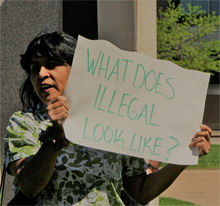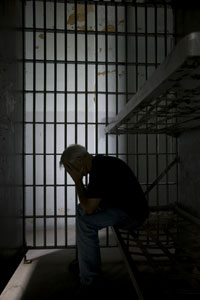Featured Work

The Right to Asylum: What Can We Do?
Amongst this overall hopelessness appears a question - what can I do? In fact, there are many answers to it:
If you speak a foreign language – you can volunteer as a translator for asylum seekers
You can support the team of local pro bono lawyers (also involving a clerical support);
At your local congregation you can start a sanctuary that will secure those who are about to be detained and/or deported
You can also support the legal and advocacy efforts of your local ACLU.
For instance, starting a sanctuary at your congregation requires a joint effort of the members, but can be a perfect opportunity of bringing their faith to life. Check the interfaith toolkit. You can also press your local officials to create a sanctuary space within their jurisdiction. Such has already been achieved (more or less) in Lorain, Ohio. Moreover, Columbus, Cincinnati, and Dayton are proclaimed “sanctuary cities” – described as, “a municipality that limits communication between local law enforcement officers and federal [immigration] agents.”
You can also gain more awareness on the issue. The forerunner of the Immigration & Human Rights Clinic at The Akron University School of Law – Professor Elizabeth Knowles* shares with us information about the situation of asylum seekers in the State of Ohio. She also provides examples of how she and her students have worked to alleviate human rights abuses for those who seek asylum here. Just to remind you – many asylum seekers were last year involuntarily renditioned to a private detention facility in Youngstown, Ohio, (owned by CoreCivic) .
To understand the nature of these issues I interviewed a forerunner of the Immigration & Human Rights Clinic at the Akron University School of Law – Professor Elizabeth Knowles*:
Q: What is the situation in regards to asylum seekers in the state of Ohio?
A: In Northeast Ohio we have four detention facilities, three of which are county jails Geauga, Butler, and Seneca, and we have the big detention facility in Youngstown which is the CoreCivic, and it shares space with the U.S. Marshals Service and with the State of Ohio. There is no family detention center in Ohio. The facility in Youngstown began detaining non-citizens for ICE in about November/December of 2016. They started the hearings by the immigration court in January of this year via tele-video, not with the judge present in Ohio, but with the judge in Kansas City, MO, who will handle these hearings. When I went there to observe these hearings initially in January, there were about 250 individuals and they had all came up from the Southern border, from Southern Texas and Southern California. About 95% of them were from South America and Mexico, and were Spanish speaking. They would have their master calendar hearing in a little room with the judge sitting in Kansas City. There was one ICE officer sitting in the room with them. The majority of them were seeking asylum at that time. The ICE officer would hand them an English asylum application as they finished up their hearing and the judge would ask them to fill that out and bring it back. But they could not read or write in English, so it was very difficult for them to follow the judge’s instruction.After observing for a while, I started a legal ri


